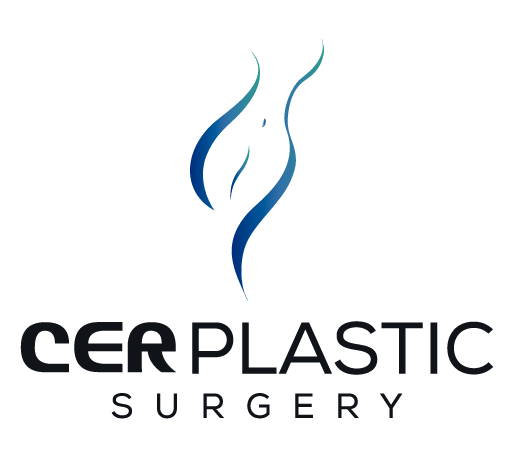Understanding Surgical Scars: Overview of 3 Types
In this comprehensive guide, we’ll delve into the intricacies of various surgical scars, shedding light on the fact that all surgeries, whether internal or external, leave a mark. Our focus will be on the three main types of scars, including the unique characteristics of flat and widened scars, as well as the distinctive features of raised and widened scars like keloid and hypertrophic scars.
All Surgery Produces Scars, Whether Internal or External
Surgery is often associated with transformative outcomes, but it’s essential to acknowledge that every surgical procedure leaves its mark. Scarring is a natural part of the healing process, whether the surgery is internal or external. The body’s response to tissue injury involves the formation of scars as part of the reparative phase. Understanding the nature of these scars can help individuals manage expectations and make informed decisions about their healthcare journey.
3 Types of Scars: Differentiating the Characteristics
Flat and Widened Scars
Flat and widened scars are one of the most common outcomes of surgical procedures. These scars typically result from a meticulous healing process, where the body repairs the injured tissues. The scar tissue may appear flat on the skin’s surface and can sometimes widen over time. Factors influencing the development of flat and widened scars include genetics, skin type, and the surgical technique used.
FAQ: What factors contribute to the widening of scars over time?
The widening of scars can be influenced by various factors, such as individual healing patterns, tension on the incision site, and the body’s collagen production. Proper wound care and scar management strategies can help minimize the likelihood of significant widening.
Raised and Widened: Keloid Scar
Keloid scars present a unique challenge in the realm of surgical scars. Unlike typical scars that may fade over time, keloid scars extend beyond the original incision area, forming a raised, often irregularly shaped mass of tissue. This type of scar results from an overproduction of collagen during the healing process, leading to an excessive growth of scar tissue.
FAQ: Can keloid scars be prevented?
While it’s challenging to completely prevent keloid formation, various interventions, such as silicone sheeting, corticosteroid injections, and laser therapy, can help manage and reduce the appearance of keloid scars. Early intervention is key to effective treatment.
Raised and Widened: Hypertrophic Scar
Hypertrophic scars share some similarities with keloid scars, as they are also raised and widened. However, hypertrophic scars remain within the boundaries of the original incision and are more responsive to treatment. These scars result from an overproduction of collagen, but unlike keloids, they don’t extend beyond the initial wound site.
FAQ: How are hypertrophic scars treated?
Treatment options for hypertrophic scars include topical silicone products, corticosteroid injections, and laser therapy. These interventions aim to reduce the raised and widened appearance of the scar, promoting a more cosmetically favorable outcome.
Conclusion: Navigating the Landscape of Surgical Scars
In conclusion, understanding the various types of surgical scars is crucial for both healthcare professionals and individuals undergoing surgical procedures. Recognizing that scarring is an inherent part of the body’s healing process allows for informed decision-making and realistic expectations.
Whether dealing with flat and widened scars or contending with the challenges of raised and widened scars like keloids and hypertrophic scars, individuals can take proactive steps in scar management. Seeking guidance from healthcare professionals and exploring the diverse array of treatment options available can contribute to a more positive and aesthetically pleasing outcome.
Remember, each person’s healing journey is unique, and a combination of genetic, environmental, and procedural factors influences the formation of scars. By demystifying the intricacies of surgical scars, we empower individuals to navigate their healthcare experiences with confidence and a comprehensive understanding of the healing process.
Understanding that scars develop
As a result of the intricate interplay between collagen production and tissue repair provides a foundation for effective scar management. For those contending with raised scars like keloids and hypertrophic scars, treatment options such as silicone gel sheets, corticosteroid injections, and laser therapy offer valuable interventions. These approaches aim to modulate collagen production, enhance blood flow, and promote a more favorable cosmetic outcome.
When addressing scars, it’s crucial to consider potential side effects associated with different treatment modalities. Whether opting for laser therapy, corticosteroid injections, or surgical removal, individuals should be aware of possible outcomes and consult with healthcare professionals to determine the most suitable approach.
Moreover, scar treatment extends beyond surgical scars, encompassing conditions like acne scars. Laser treatment has emerged as a versatile option for improving the appearance of both surgical and acne scars, stimulating collagen production, and promoting healthier skin.
As we navigate the evolving landscape of scar management, innovations in radiation therapy and continued advancements in medical science offer promising avenues for more personalized and effective interventions. Tailoring treatment options to the specific characteristics of scars, including their type and location, allows for a comprehensive and individualized approach.
In the realm of scar prevention,
Particularly for those prone to keloid formation, early intervention and diligent wound care can play a pivotal role. Silicone gel sheets, known for their efficacy in minimizing raised scars, can be a valuable tool in scar prevention.
In essence, the journey of scar management is a collaborative effort between healthcare professionals and individuals. By staying informed about the diverse treatment options available, including laser therapy, corticosteroid injections, and surgical removal, individuals can actively participate in decisions about their healthcare.
Scars are a testament to the body’s remarkable ability to heal, and with advancements in scar treatment, we can strive for outcomes that not only support physical recovery but also contribute to enhanced confidence and well-being. In the realm of scar management, the future holds the promise of continued innovation, providing hope for even more effective and personalized solutions for those navigating the unique landscape of scars and their treatment
START A VIRTUAL CONSULTATION
A virtual consultation is when you send us photos of the places of your body where you’d like to improve. Then our surgeon analyzes it to confirm that you are a candidate for that particular procedure. We later inform you about our doctor’s decision and give you a quote with all the information about your surgery. Please, do be at ease that everything is confidential between yourself, the doctor, and the doctor’s representative.




